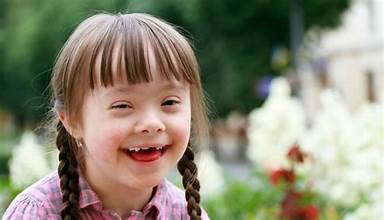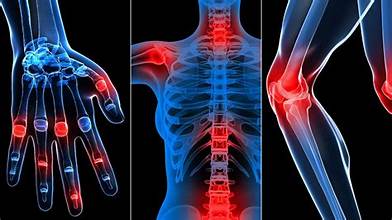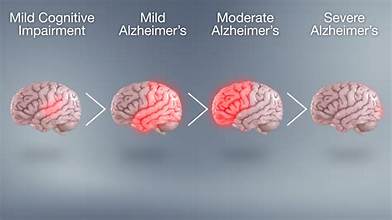Depression, is a major medical disorder which is also known as major depressive disorder(MDD). It is not only feeling sad or low but it is more than these two terms. Depression is a serious mental health condition that affects many persons daily life thoughts their behavior, their emotions their interest. Depression can lead to cause a persistent sense of hopelessness, low interest in daily activities and difficulty function in everyday life. Depressions may last for a long time of weeks’ months even years without treatment.
Kinds of depressions:
There are many kinds of depression which include;
Major Depressive Disorder:
It is Marked by persistent sadness, a diminished interest in activities once enjoyed, and noticeable changes in sleep and appetite.
Persistent Depressive Disorder (Dysthymia):
Persistent depressive disorder (dysthymia) is a chronic but less severe form of depression that lasts for at least two years in adults (or one year in children and adolescents). Unlike major depression, its symptoms are generally milder but longer-lasting, often interfering with daily life, relationships, and productivity. Common signs include persistent sadness, low energy, poor concentration, changes in sleep or appetite, and feelings of hopelessness. Because of its long duration, many people may see these symptoms as part of their personality rather than a treatable condition.
Postpartum Depression:
Postpartum depression is a mood disorder that develops in women after childbirth, often triggered by a combination of hormonal shifts, emotional stress, and the physical demands of caring for a newborn. Unlike the brief “baby blues,” which usually resolve within a couple of weeks, postpartum depression is more intense and long-lasting. It may include persistent sadness, anxiety, irritability, difficulty bonding with the baby, sleep or appetite disturbances, and feelings of guilt or inadequacy. If left untreated, it can affect both the mother’s well-being and the child’s development, but with timely medical and psychological support, recovery is very possible.
Seasonal Affective Disorder (SAD):
Seasonal Affective Disorder (SAD) is a type of depression that follows a seasonal pattern, most commonly emerging during the late fall and winter months when daylight hours are shorter. Reduced exposure to natural sunlight is believed to disrupt the body’s internal clock (circadian rhythm) and affect serotonin and melatonin levels, leading to symptoms such as persistent low mood, lack of energy, increased sleep, changes in appetite (especially cravings for carbohydrates), and difficulty concentrating. Symptoms typically improve in spring and summer when sunlight increases. Light therapy, lifestyle adjustments, and in some cases medication or counseling, are effective treatment options.
Causes of Depression:
Depression, is multifactorial condition, that arise from a combination of biological, psychological, and environmental factors:
Biological Factors:
Depression can arise from several biological factors. One major cause is chemical imbalances in the brain, particularly involving neurotransmitters such as serotonin, dopamine, and norepinephrine, which play a vital role in regulating mood and emotions. A genetic predisposition also contributes to the risk, as individuals with a family history of mental illness are more likely to develop depressive disorders. Additionally, hormonal fluctuations such as those linked to thyroid dysfunction, pregnancy, or postpartum changes can significantly influence the onset or worsening of depression.
Psychological Factors:
Psychological and environmental factors also play a significant role in the development of depression. Traumatic experiences, including abuse, neglect, or the loss of a loved one, can deeply impact emotional well-being and increase vulnerability to depressive disorders. Likewise, personality traits such as low self-esteem, persistent negative thinking, or perfectionist tendencies can make individuals more prone to depression. Chronic stress, whether from academic pressures, workplace demands, or ongoing financial difficulties, further adds to the risk by overwhelming a person’s coping abilities and gradually affecting their mental health.
Environmental and social factors:
Environmental and social factors can significantly contribute to the onset of depression. Social isolation and the absence of supportive relationships often leave individuals feeling lonely and vulnerable, making it harder to cope with emotional challenges. Substance abuse, including the misuse of alcohol and drugs, can worsen existing mental health issues and increase the risk of developing depression. Furthermore, living in environments marked by violence, poverty, or prolonged stressful conditions creates constant psychological strain, which may eventually lead to depressive symptoms.
Symptoms of Depression:
Although depression is a mental health condition, it often share overlapping symptoms.
Common symptoms of Depression:
Involve ongoing feelings of sadness, emptiness, or hopelessness. People may lose interest or pleasure in activities they once enjoyed and often struggle with fatigue or low energy despite adequate rest. Changes in appetite or body weight, difficulty concentrating, poor decision-making, and memory problems are also typical. In severe cases, depression can lead to thoughts of self-harm or suicide.
Treatment and Management:
Both anxiety and depression are highly treatable, though approaches may differ depending on the individual’s condition. Treatment usually combines medical care, psychotherapy, and lifestyle adjustments.
Depression Treatment
Psychotherapy (Talk Therapy):
Cognitive Behavioral Therapy (CBT): Helps patients identify and reframe negative thought patterns.
Interpersonal Therapy (IPT): Improves communication skills and strengthens relationships.
Psychodynamic or Supportive Therapy: Explores underlying emotional conflicts and provides coping strategies.
Medications:
Antidepressants such as SSRIs (Selective Serotonin Reuptake Inhibitors) or SNRIs (Serotonin-Norepinephrine Reuptake Inhibitors).
Mood stabilizers or atypical antipsychotics in cases of severe or treatment-resistant depression.
Lifestyle Modifications:
Regular physical activity to boost endorphins and overall mood.
A nutrient-rich, balanced diet to support brain function.
Adequate and consistent sleep to regulate emotions.
Mindfulness, meditation, or stress-reduction techniques.
Support Systems:
Sharing feelings with trusted family or friends to reduce loneliness.
Participation in depression-focused support groups, both online and in-person.
Guidance and follow-up care from mental health professionals.
Prevention Strategies:
Although anxiety and depression cannot always be fully prevented, certain lifestyle choices and proactive measures can help reduce the risk and minimize their impact. Building strong social connections and maintaining healthy relationships provide emotional support and a sense of belonging, which are protective against mental health challenges. Effectively managing stress through hobbies, relaxation exercises, mindfulness, or good time management also plays a vital role in maintaining emotional balance. Avoiding harmful substances such as alcohol, drugs, and smoking is equally important, as these can worsen or trigger symptoms. Seeking professional help at the earliest signs of distress, rather than ignoring or delaying care, greatly improves outcomes. Finally, promoting mental health awareness and reducing stigma encourages open conversations, making it easier for individuals to seek support without fear of judgment.
Conclusion:
Depression is a complex but treatable mental health condition that affects millions worldwide. Its causes are multifaceted, involving biological, psychological, and environmental influences, but with timely treatment and support, recovery is achievable. Effective management through therapy, medication, healthy lifestyle habits, and strong social networks can greatly improve quality of life. While not all cases can be prevented, early intervention, self-care strategies, and community awareness play a vital role in reducing the burden of depression. Ultimately, recognizing depression as a medical condition rather than a personal weakness is the first and most important step toward healing and hope.








